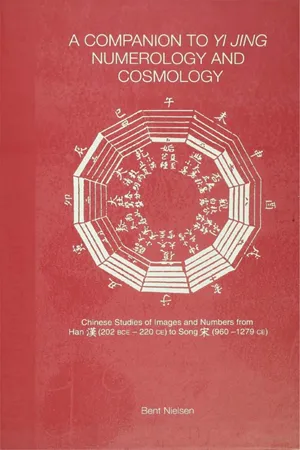
- 424 pages
- English
- ePUB (mobile friendly)
- Available on iOS & Android
A Companion to Yi jing Numerology and Cosmology
About this book
Translations of the Yi jing into western languages have been biased towards the yili ('meaning and pattern') tradition, whereas studies of the xiangshu ('image and number') tradition - which takes as its point of departure the imagery and numerology associated with divination and its hexagrams, trigrams, lines, and related charts and diagrams - has remained relatively unexplored. This major new reference work is organised as a Chinese-English encyclopedia, arranged alphabetically according to the pinyin romanisation, with Chinese characters appended. A character index as well as an English index is included. The entries are of two kinds: technical terms and various other concepts related to the 'image and number' tradition, and bio-bibliographical information on Chinese Yi jing scholars. Each entry in the former category has a brief explanation that includes references to the origins of the term, cross-references, and a reference to an entry giving a more comprehensive treatment of the subject.
Frequently asked questions
- Essential is ideal for learners and professionals who enjoy exploring a wide range of subjects. Access the Essential Library with 800,000+ trusted titles and best-sellers across business, personal growth, and the humanities. Includes unlimited reading time and Standard Read Aloud voice.
- Complete: Perfect for advanced learners and researchers needing full, unrestricted access. Unlock 1.4M+ books across hundreds of subjects, including academic and specialized titles. The Complete Plan also includes advanced features like Premium Read Aloud and Research Assistant.
Please note we cannot support devices running on iOS 13 and Android 7 or earlier. Learn more about using the app.
Information

























Qian’s Palace 乾宮



Table of contents
- Cover Page
- Half Title page
- Title Page
- Copyright Page
- Dedication
- Contents
- List of Plates
- Common Abbreviations
- Conventions
- Introduction
- A Companion to Yi Jing Numerology and Cosmology
- Selected Bibliography
- Index of Common English Translations of the Hexagram Names
- Index of Chinese Works